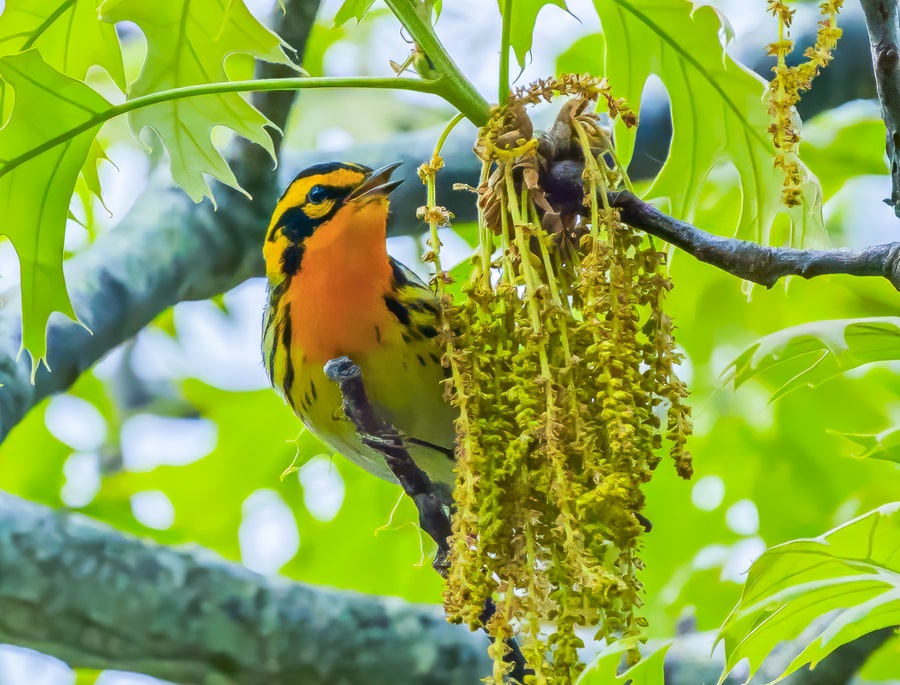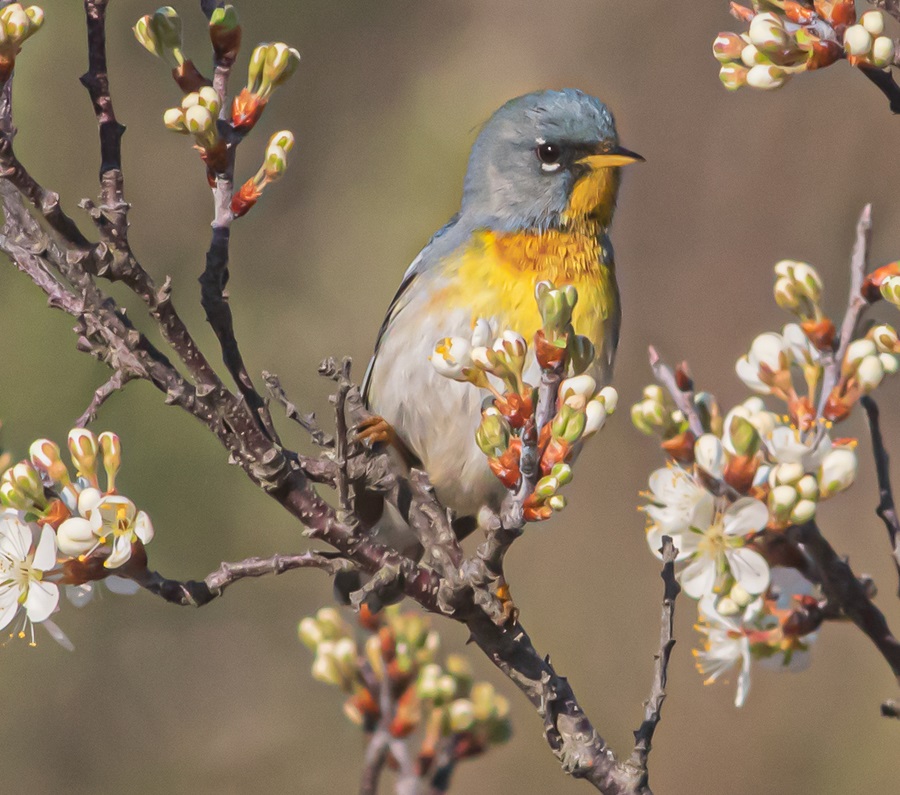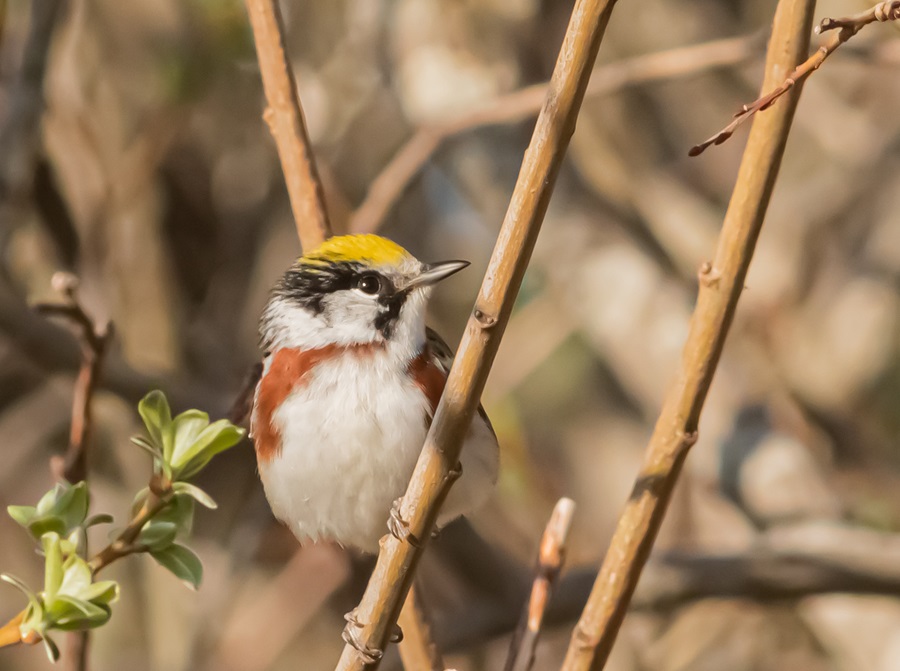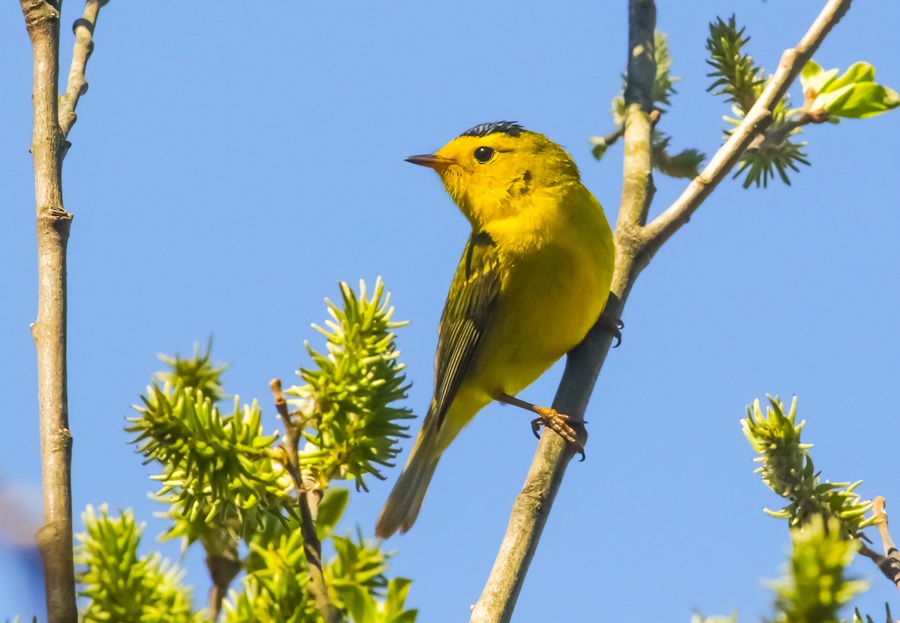Yes, we got through the winter here on Cape Cod, and we’ve been counting the days through March and April. Finally, the wind and the cold are pretty much behind us. May is the time to get out of the house.
This is the month of rebirth and rejuvenation: life is greener, the air is warmer, the breezes are from the south and southwest. And all of this means birds.
Even the casual observer will find it easy to see the osprey overhead — these magnificent birds of prey can’t be missed. For a better chance of observing one carrying a river herring, yellow perch, or flounder, visit a neighborhood wetland, pond, or herring run. Now, too, you’ll see the larger herons, egrets, or perhaps a glossy ibis out in the marshes.

But it’s the spring migration of smaller songbirds here on Cape Cod that presents the challenge and pleasure I’m thinking about right now.
These birds — several species of colorful warblers, the vireos, the tanagers, and our local Baltimore orioles, hummingbirds, and gray catbirds — begin to arrive in late April and early May, and not all will stay long, so get to the closet or shelf and find your binoculars. Observing them this way will get you involved with learning about their lives and migrations.

Maybe you find it hard to identify these birds — especially in May as their number and diversity of species increase. But that’s all the more reason to take advantage of this moment, go outside, and, even if you’re just in your own yard, stand there and listen to their songs in early morning. Today is the day to learn the song of the pine warbler, a widespread local nester singing a melodic trill high in the pitch pines.
The oaks and other hardwoods like sassafras and tupelo will hold many small migratory warblers throughout May. Your chance to observe them is now, while the leaves are still small.
The warblers, vireos, and other small songbirds — some 15 to 20 species — we’re seeing are coming from Central and South America. These birds migrate at night, some making long flights over open ocean, and for many, Cape Cod is just a stop for rest and feeding as they continue their journeys to the forests of northern New England and Canada.

As much as many of we bird lovers and naturalists wait for the spring arrival of these brightly colored, high-energy sprites to rejuvenate the woodlands with their songs, they can also overwhelm and confuse us. They are tiny, averaging less than half an ounce in weight (the northern cardinal that we see in our yards throughout the year weighs three times as much). And as they clamor, whirl, and twirl through the green canopy, they don’t seem to stand still long enough for us to focus on them.

The features to look for in identifying warblers are the face color, the breast pattern, and whether there are bars of white on the wings. The names of many of the warblers describe them: the black-and-white warbler, black-throated blue warbler, or black-throated green warbler. There’s also the bay-breasted or yellow-rumped warbler. The yellow warbler is an easy one and a local nester. A good local field guide will help. As will a spring walk or field class with your local conservation trust or the Cape Cod Bird Club or at the Wellfleet Bay Wildlife Sanctuary.

But as you walk along on a warm spring morning at the Beech Forest or Foss Woods in Provincetown, the Wellfleet sanctuary, or your favorite nearby woodland, preferably near water, remember that there is no pressure to identify these fast-moving, tiny birds. You might, instead, stand there and simply enjoy where you are and the sensory stimulation that surrounds you. The birds, most of which are insectivorous, might be feeding on midges, gnats, moths, caterpillars, or the sweet nectar of budding leaves and flowers.
By the last days of this month, the leaves on the oaks will have pretty much grown out, the mosquitoes will have hatched and will be swarming, and the last of the migratory warblers, typically the blackpoll warbler, will more often be heard than seen. Take advantage of these next three weeks to immerse yourself in the beauty of our pine and oak woodlands and keep those binoculars close by.



